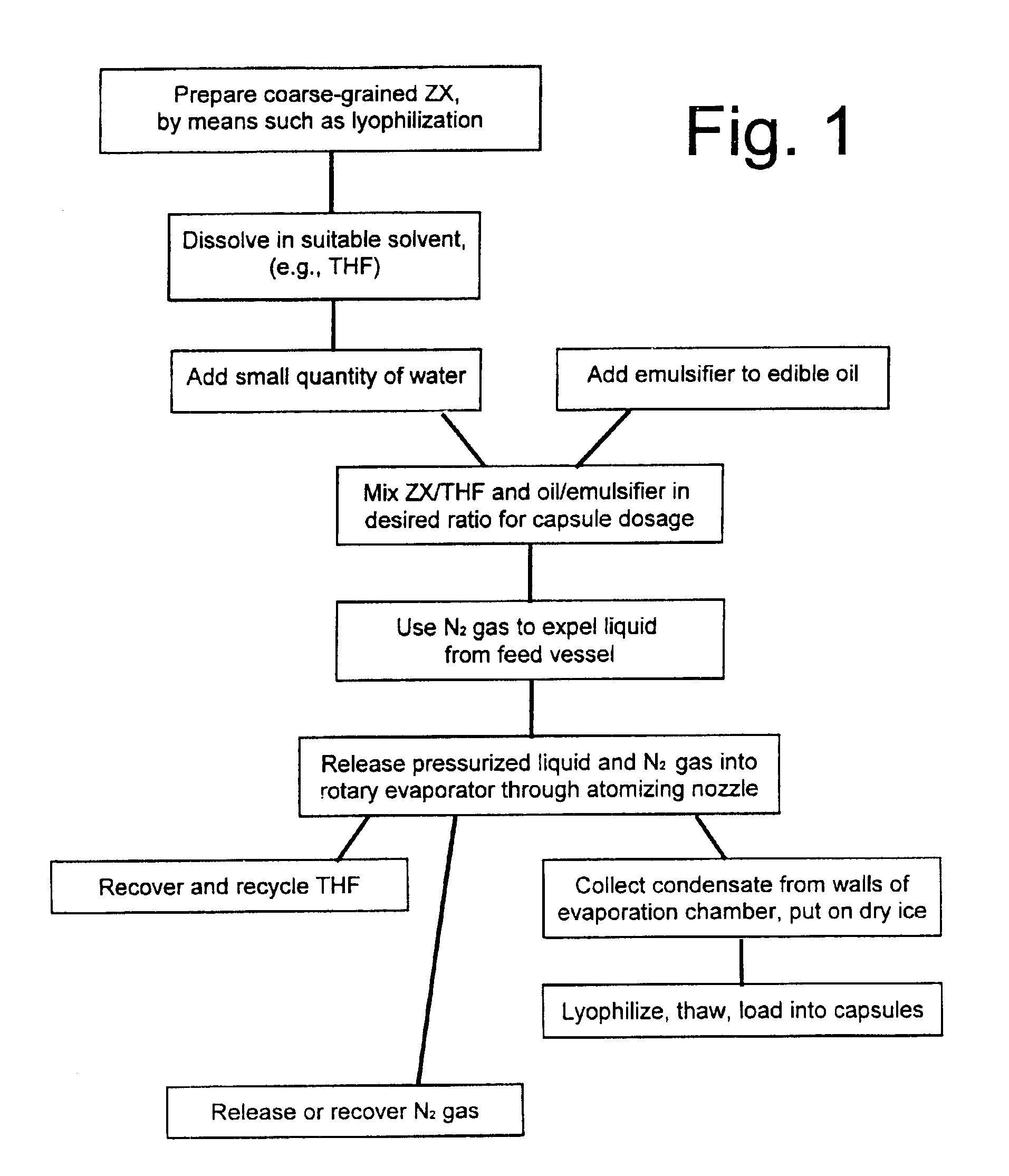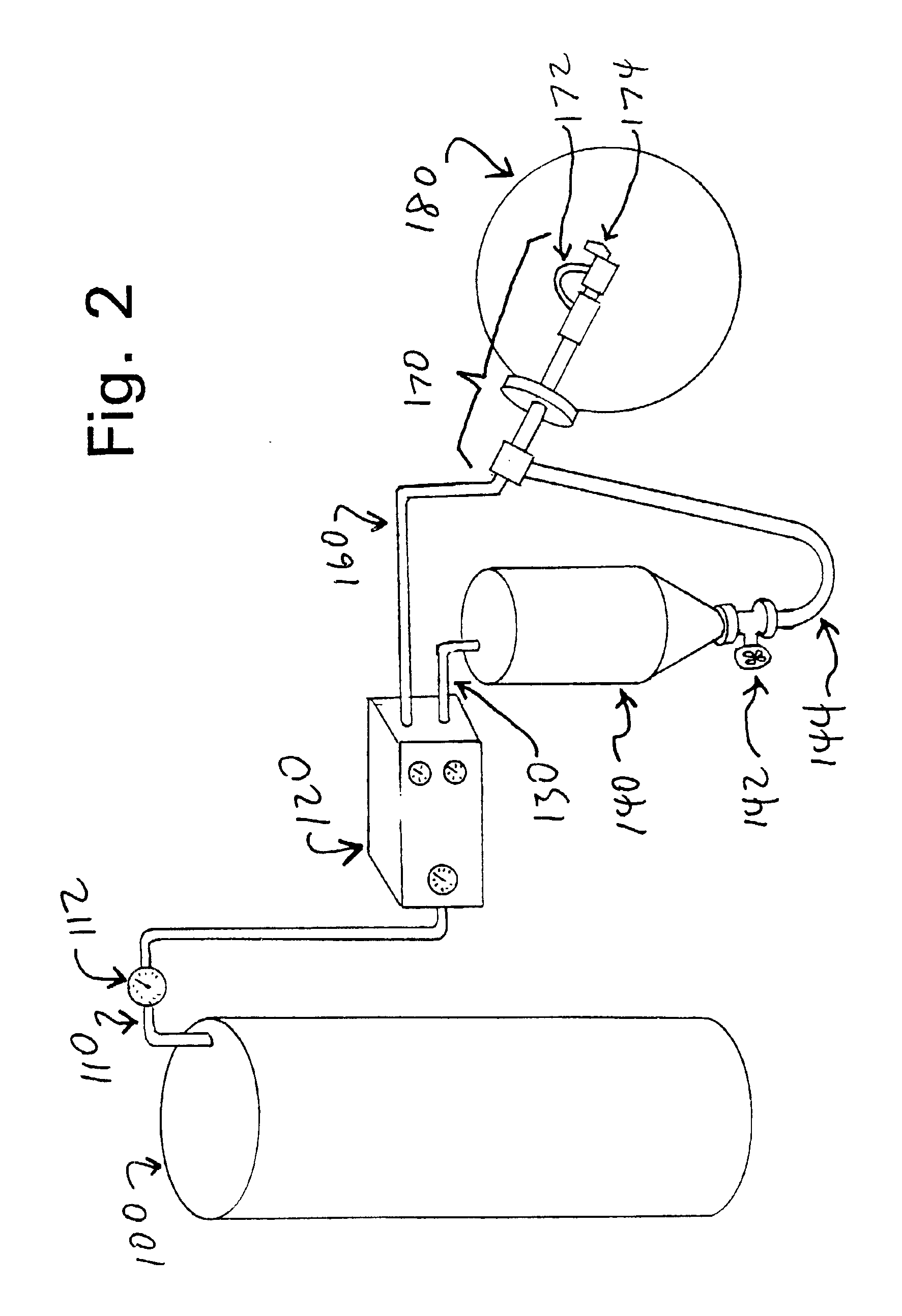Microcrystalline zeaxanthin with high bioavailability in oily carrier formulations
a technology of microcrystalline zeaxanthin and oily carrier, which is applied in the field of biochemistry and medicine, can solve the problems of not giving carotenoid crystals time to grow larger, and achieve the effect of substantially increasing the bioavailability of this microcrystalline form and increasing the bioavailability of the carotenoid crystal
- Summary
- Abstract
- Description
- Claims
- Application Information
AI Technical Summary
Benefits of technology
Problems solved by technology
Method used
Image
Examples
example 1
Preparation of Lyophilized Coarse-Grain ZX Powder
[0081]Zeaxanthin (ZX) was synthesized by fermenting a culture of Flavobacterium multivorum cells, derived from the cell strain deposited with the American Type Culture Collection under ATCC accession number 55238. This fermentation used the methods disclosed in U.S. Pat. No. 5,854,015 (Garnett et al 1998), cited above and incorporated herein by reference.
[0082]In some test runs, the liquid broth was separated from the cells by centrifugation, before the processing described below. However, that step did not appear to make a major difference in the crystal sizes in the resulting products.
[0083]During all processing steps described below, any mixtures containing ZX were protected from light, heat, and oxygen.
[0084]Acetone was added to the cells, at various quantities which generally centered on 15 liters of acetone per gram of cell solids. This killed the cells and extracted the majority of the ZX into the liquid (solvent) phase. The ce...
example 2
Treatment of Powdered ZX
[0094]Powdered lyophilized ZX, prepared as described in Example 1, was dissolved in tetrahydrofuran (THF), at concentrations up to 20 g of ZX per liter (which is close to the saturation level of ZX in THF, at the temperatures used). Selected concentrations depended on the target weight of ZX in each final capsule. Conventional orally-ingested capsules of the type that are used to hold Vitamin E in an oil-based formulation can hold up to about 600 mg (0.6 ml) of liquid. Accordingly, if the encapsulated liquid contains 10% ZX in an oily carrier comprising an edible oil (such as olive oil, corn oil or other vegetable oil, etc.), each capsule can contain up to about 60 mg ZX. Typical dosage ranges for the capsules developed as disclosed herein were about 1 to about 10 mg ZX per capsule. Typical capsules contained up to about 500 mg of the ZX-in-oil liquid.
[0095]A small amount of water (0.5% v / v) was added to the THF / ZX mixture. Separately, 6% w / w lecithin (an emu...
example 3
Bioavailability of Beadlet vs. Micro-Crystalline ZX
[0101]An initial set of bioavailability tests, comparing beadlet ZX versus micro-crystalline ZX, was carried out on a single human volunteer, in order to establish suitable test dosages, response times, and other parameters for a larger set of bioavailability tests on a substantially larger population of volunteers. However, the tests on the first volunteer required literally dozens of “needlesticks” (i.e., skin and vein punctures, using hypodermic needles), in order to draw blood samples that could be chemically analyzed for concentrations of ZX and other carotenoids. Each needlestick generated discomfort, as well as risks of infection, and of long-term damage to the blood vessels being punctured.
[0102]An inordinately large number of needlesticks was required, in order to fully establish ZX and other carotenoid concentrations in the blood over five different time periods, which were: (1) “baseline” levels, prior to any treatment; (...
PUM
| Property | Measurement | Unit |
|---|---|---|
| Length | aaaaa | aaaaa |
| Diameter | aaaaa | aaaaa |
| Particle size | aaaaa | aaaaa |
Abstract
Description
Claims
Application Information
 Login to View More
Login to View More - Generate Ideas
- Intellectual Property
- Life Sciences
- Materials
- Tech Scout
- Unparalleled Data Quality
- Higher Quality Content
- 60% Fewer Hallucinations
Browse by: Latest US Patents, China's latest patents, Technical Efficacy Thesaurus, Application Domain, Technology Topic, Popular Technical Reports.
© 2025 PatSnap. All rights reserved.Legal|Privacy policy|Modern Slavery Act Transparency Statement|Sitemap|About US| Contact US: help@patsnap.com



